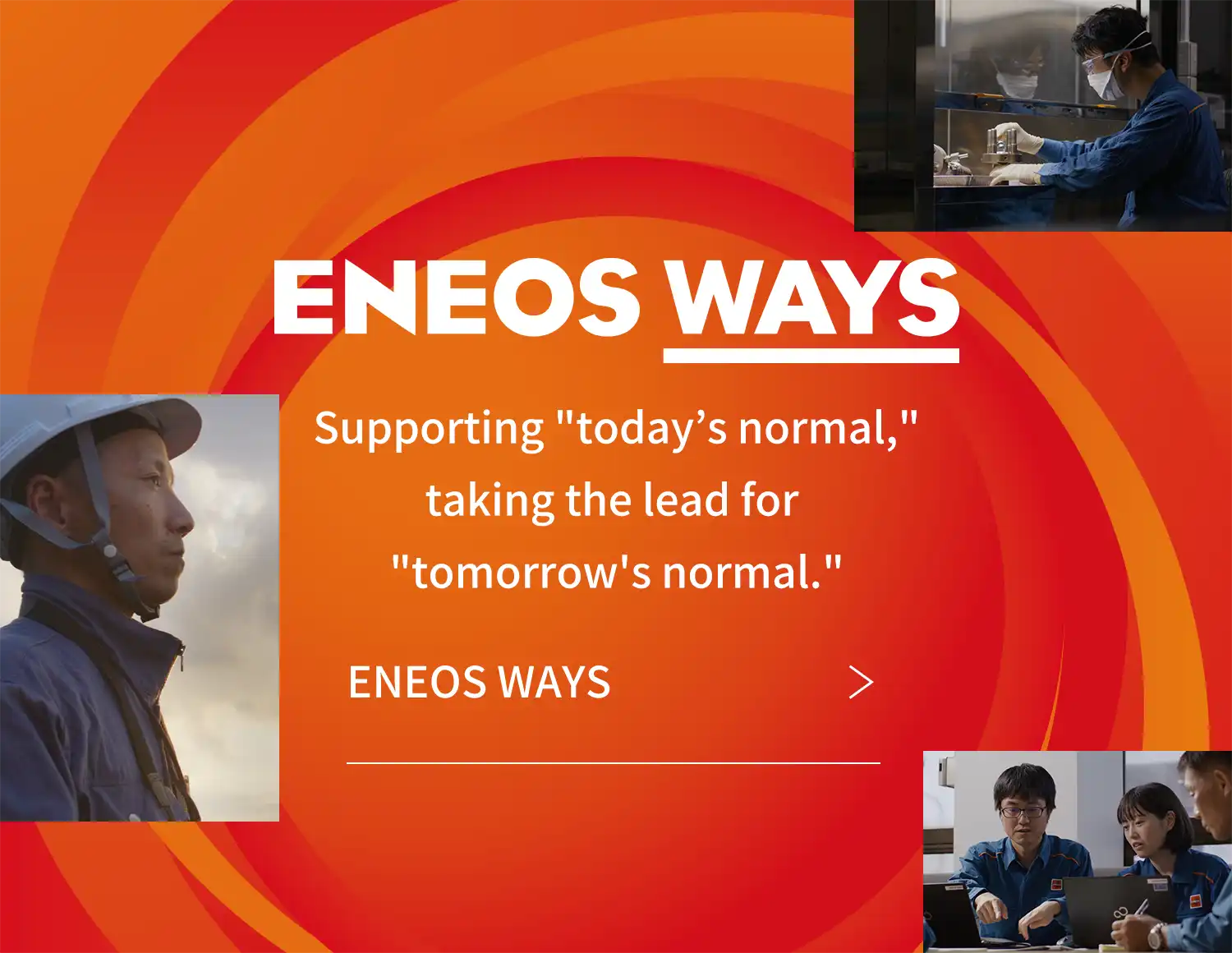The ENEOS Group has continued to provide necessary value to society throughout its more than 100 years of history.
Introducing the ENEOS Group's history of growth
Our Movements
Social Movements
From the 1880s Dawn of the Meiji era and industrial development
1880
1888
-
1888 Nippon Oil Corporation Limited established
Production of crude oil in Niigata Prefecture began
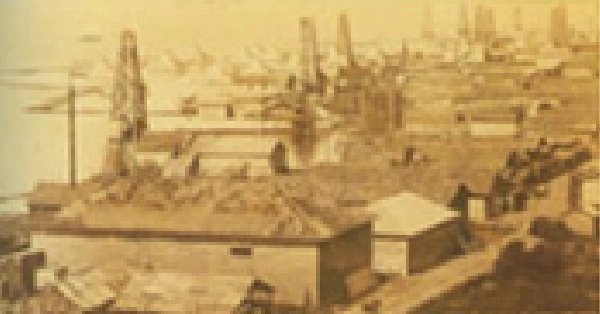 ▲ Amase Oil Field
▲ Amase Oil Field
1893
-
1893 Hoden Oil Company established
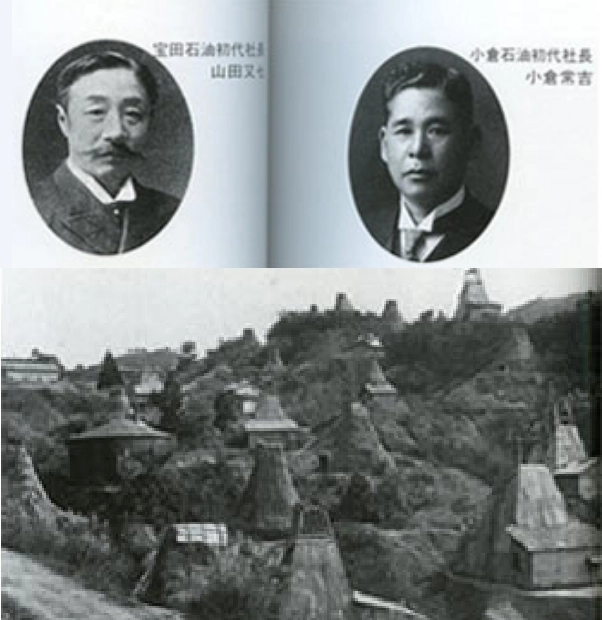
 ▲ President of Hoden Oil and Ogura Oil (above); a hand-dug well at the Hoden Oil Higashiyama Oil Field (mid-Meiji era) (under)
▲ President of Hoden Oil and Ogura Oil (above); a hand-dug well at the Hoden Oil Higashiyama Oil Field (mid-Meiji era) (under)
1894
-
1894 Nippon Oil Corporation Limited changed its name to Nippon Oil Corporation
Naito Hisahiro, a Niigata prefectural assembly member, became interested in the oil business after seeing an oil well drilled near his home in Amaze (Santo-gun, Niigata Prefecture). Upon gaining knowledge of the oil situation in the U.S., Naito was convinced that the oil business had a promising future. He consulted with Yamaguchi Gonzaburo, a prominent figure in his hometown and the prefectural assembly chairman, about establishing a petroleum company. Yamaguchi led the establishment of Nippon Oil Corporation Limited in May 1888. Naito (28 years old at the time) was appointed as the company's first president. Immediately after its establishment, Nippon Oil reclaimed the coast of Amaze and drilled an oil well in the sea, which was a success and laid the foundation for the company's development.
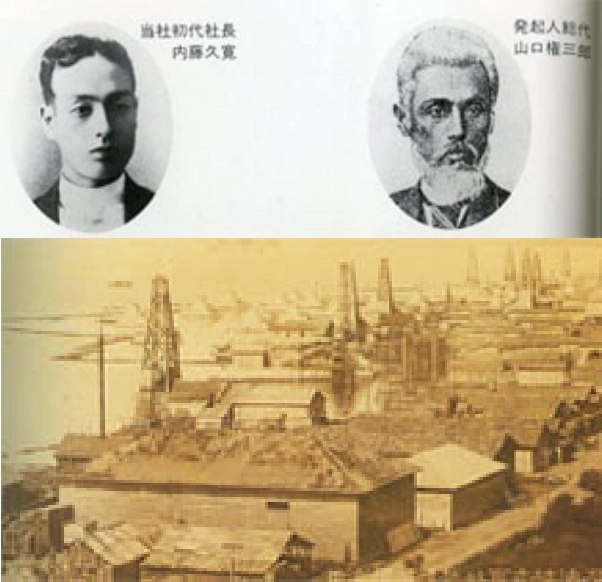
 ▲ Founder of Nippon Oil (left); Amase Oil Field (mid-Meiji era) (right)
▲ Founder of Nippon Oil (left); Amase Oil Field (mid-Meiji era) (right)
1919
-
1919 Japan's first gas station opened
1925
-
1925 Ogura Oil Corporation established
 ▲ Ogura Oil Tokyo Head Office (1907–1912) (left); Ogura Oil Tokyo Refinery (later Nippon Petroleum Processing Tokyo Plant) (right)
▲ Ogura Oil Tokyo Head Office (1907–1912) (left); Ogura Oil Tokyo Refinery (later Nippon Petroleum Processing Tokyo Plant) (right)
1929
-
1929 Nippon Mining Co. established
After gaining confidence through the reconstruction of the Kosaka Mine (Akita Prefecture), Kuhara Fusanosuke acquired the Akasawa Copper Mine (Ibaraki Prefecture) in 1905 and opened it as the Hitachi Mine. From the beginning of its operations, Kuhara was focused on mechanization and modernization, and through leading the full-scale development of purchased ore smelting, in which ores are purchased from other mines and smelted, pushed forward with large-scale management. In 1912, Kuhara reorganized Kuhara Mining, which had been a private company, into a joint-stock company, Kuhara Mining Co. In addition to the metal mining and smelting business, Kuhara actively diversified his businesses both domestically and overseas, including oil exploration, expansion of the machinery production division, establishment of trading companies, and management of plantations. In 1919, Kuhara Mining's total assets were the second largest in Japan following Kawasaki Dockyard Co., Ltd. In 1928, Kuhara Mining, was renamed Nippon Sangyo Co., and the following year, Nippon Mining Co. was established by succeeding the metal mining business of Nippon Sangyo, which was the company's core business.
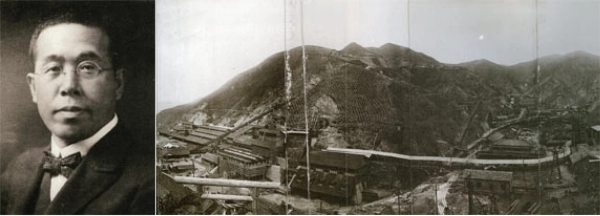 ▲ Kuhara Fusanosuke (left); Hitachi Mine (1914) (right)
▲ Kuhara Fusanosuke (left); Hitachi Mine (1914) (right)
1931
-
1931 Mitsubishi Oil Co., Ltd. established
Mitsubishi Corporation began importing and selling crude oil and heavy oil in 1923 and established a fuel department the following year. However, the company felt the need to construct a domestic refinery. To acquire imported crude oil and oil refining technology, Mitsubishi Goshi Kaisha, Mitsubishi Mining Company Ltd., and Mitsubishi Corporation cooperated to establish Mitsubishi Oil Co., Ltd. in February 1931 through a joint investment with San Francisco's Associated Oil Co., with which Mitsubishi Corporation had close ties in the oil trade.
1932
-
1932 Socony-Vacuum (U.S.) Japan Branch established
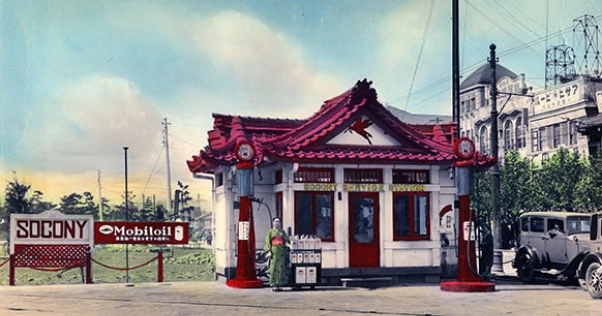 ▲ Socony service station (1928; in front of Kyoto Station)
▲ Socony service station (1928; in front of Kyoto Station)
1939
-
1939 Toa Nenryo Kogyo K.K. established
In 1939, Toa Nenryo Kogyo K.K. was founded jointly by eight Japanese petroleum companies to produce aviation gasoline and lubricants. Toa Nenryo Kogyo formed a partnership with Stanvac to introduce Standard Oil technology. Stanvac acquired 51% of Toa Nenryo Kogyo's shares (later reduced to 50%).
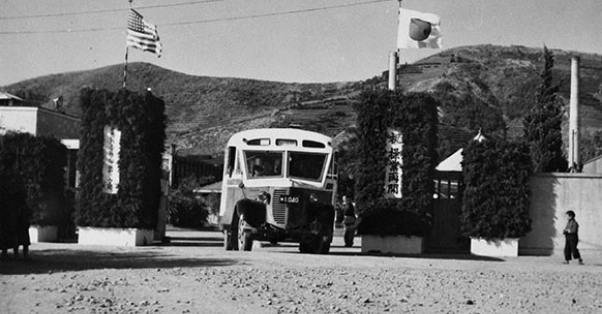 ▲ Toa Nenryo Kogyo Wakayama Plant
▲ Toa Nenryo Kogyo Wakayama Plant
From the 1940s From post-war to high economic growth period
1940
-
The 1940s After the war, industrial reconstruction led to growth in demand for petroleum products and the establishment of new refineries throughout Japan.
Domestic production of petrochemical products
Domestic production of polyethylene, synthetic rubber, and other raw materials for plastics began. Under the leadership of the government, Toa Nenryo Kogyo grew rapidly under the banner of strengthening international competitiveness.
1941
-
1941 Toyo Shoko Co., Ltd. changed its name to Koa Oil Co., Ltd.
Noguchi Eizaburo, manager of the Northern Sakhalin Oil, and his subordinate, Usui Hisao, established Toyo Shoko Co., Ltd. in 1933. The company aimed to produce high-grade lubricants and fuel oil. Later, with the goal of domestically producing high-octane aviation gasoline, the company was assigned to aviation gasoline production separately from Toa Nenryo Kogyo, with the support and assistance of the Army Aviation Headquarters. In 1941, the company changed its name to Koa Oil Co., Ltd. and deleted the listing of businesses not related to oil from its articles of incorporation.
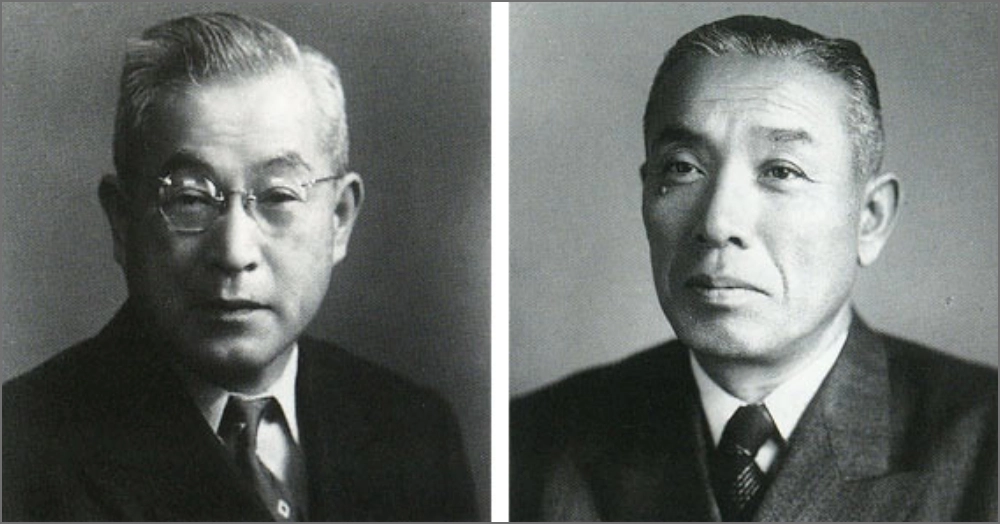 ▲ Noguchi Eizaburo (left); Usui Hisao (right)
▲ Noguchi Eizaburo (left); Usui Hisao (right)
1958
-
1958 General Sekiyu K.K. established
General Sekiyu service station
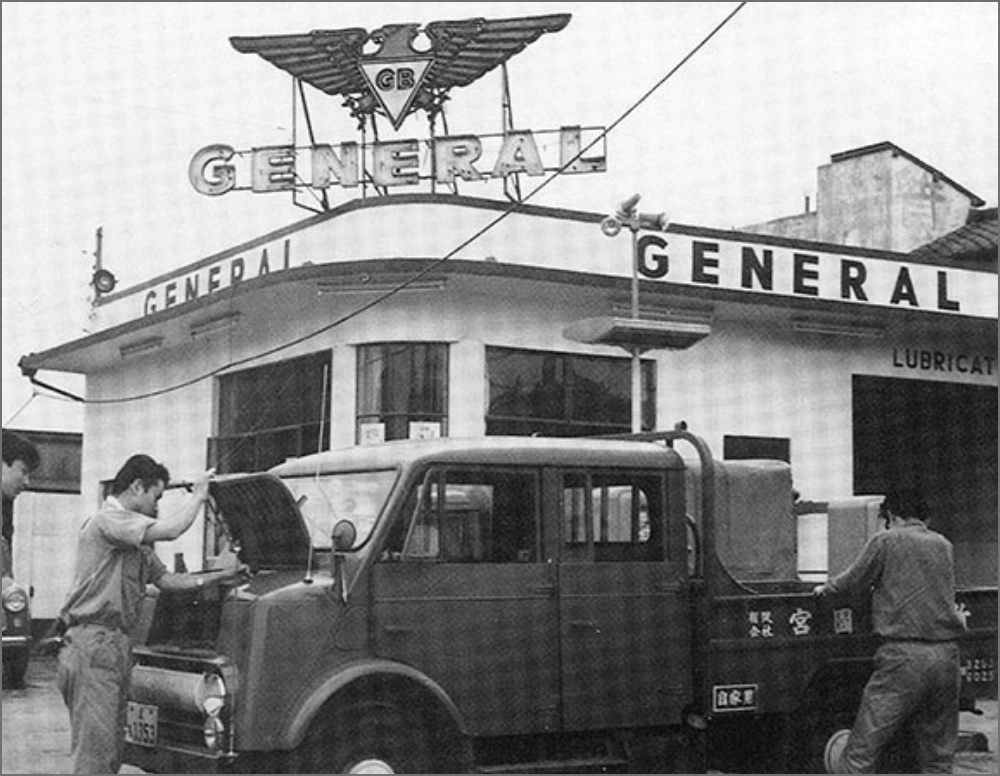
-
The 1960s Energy transition from coal to oil
Rapid expansion of private cars accelerated the establishment of new refineries, supporting rapidly growing energy demand.
Refineries opened throughout Japan
Map of the ENEOS Group's refineries (as of November 2024)
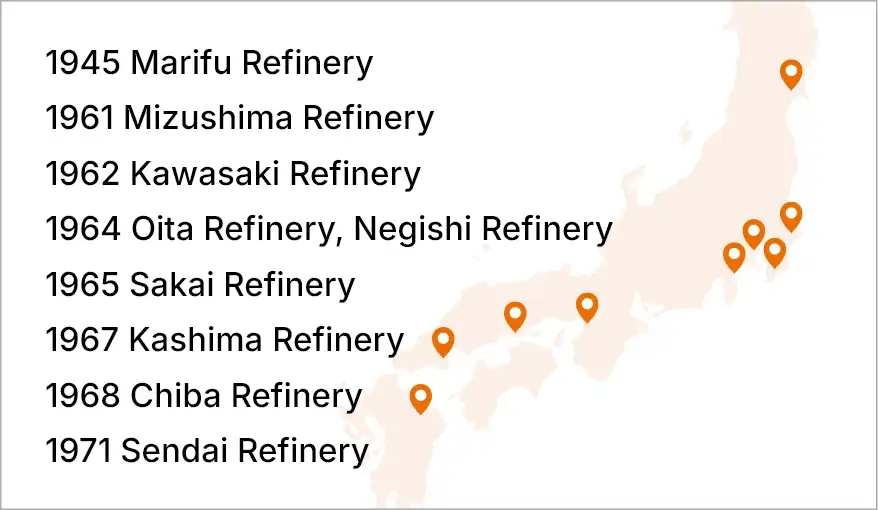
1960
-
1960 Kyushu Oil Co., Ltd. established
As the energy transition from coal to oil progressed, Yawata Iron & Steel Co., Ltd. and Kinoshita Shoten, a major trading company of iron ore and steel products, sought to enter the oil refining business. An establishment preparation committee formed within Kinoshita Shoten began preparations to establish a new company while negotiating the purchase of land for refineries, and in September 1960, the committee completed the plans for establishment. In December of the same year, Kyushu Oil Co., Ltd. was established through investments from Yawata Chemical Industry Co., Ltd., Kinoshita Shoten, Yawata Iron & Steel, Taiyo Fisheries Ltd., Kyushu Electric Power Co., Inc., and Onoda Cement Co., Ltd.
1961
-
1961 Mobil Sekiyu K.K. and Esso Standard Sekiyu K.K. established
Mobil Sekiyu K.K. and Esso Standard Sekiyu K.K. established with the dissolution of Stanvac.
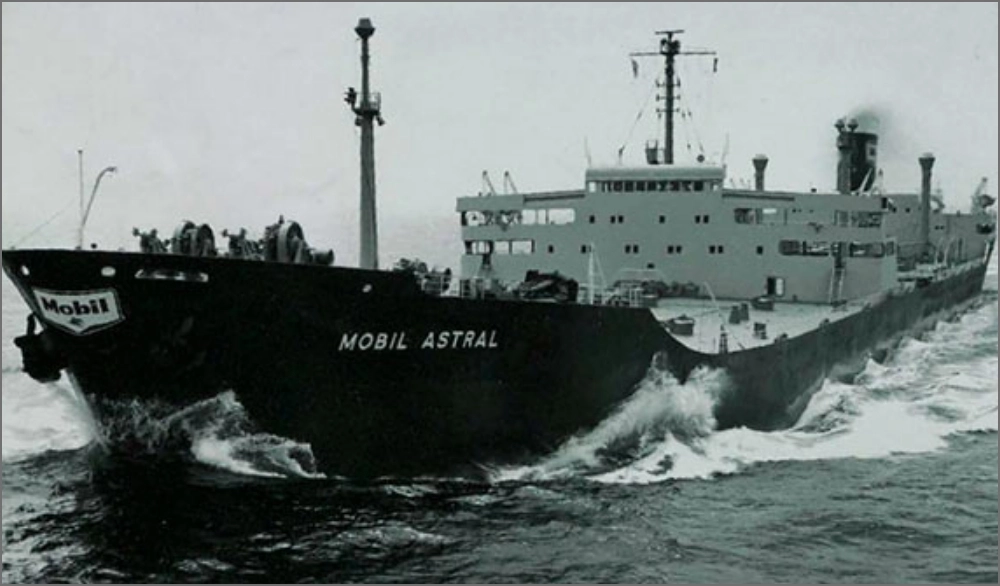
1963
-
1963 Kyokuto Petroleum Industries K.K. established
In 1963, Mobil Sekiyu and Mitsui Oil Supply Co., Ltd. invested equally in the establishment of Kyokuto Petroleum Industries K.K., an oil refining specialist.
From the 1970s Era of globalization
1970
-
The 1960s Energy transition from coal to oil
Oil crisis
War in the Middle East led to a tightening of crude oil supplies and spike in crude oil prices, resulting in the diversification of imported crude oil and the expansion of independently developed oil fields overseas from the perspective of securing stable oil supply.
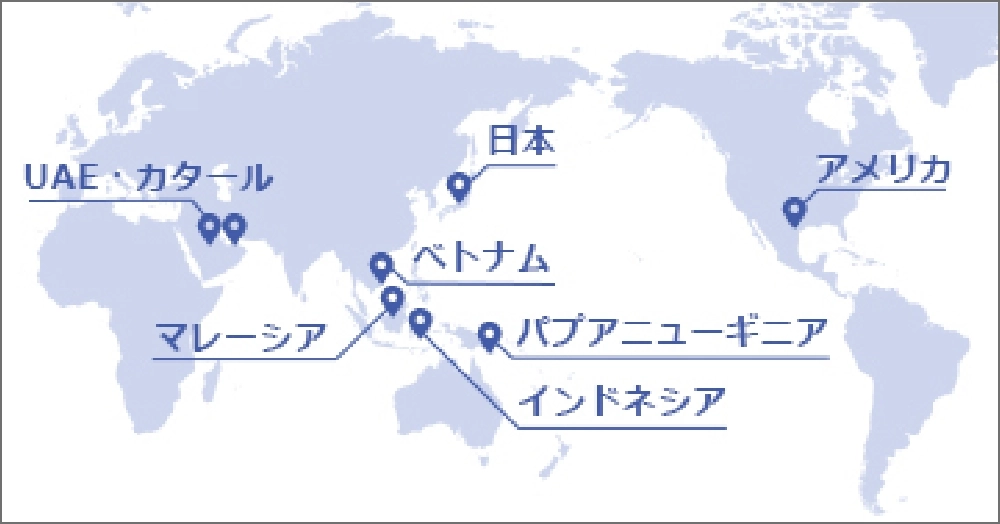 ▲ The ENEOS Group's rights and interests in oil and gas fields (as of November 2024)
▲ The ENEOS Group's rights and interests in oil and gas fields (as of November 2024)
-
Since the 1980s, deregulation of the domestic oil industry has progressively increased to improve efficiency.
1982
-
1982 Esso Standard Sekiyu K.K. changed its name to Esso Sekiyu K.K.
Mobil Sekiyu and Esso Sekiyu established with the dissolution of Stanvac.
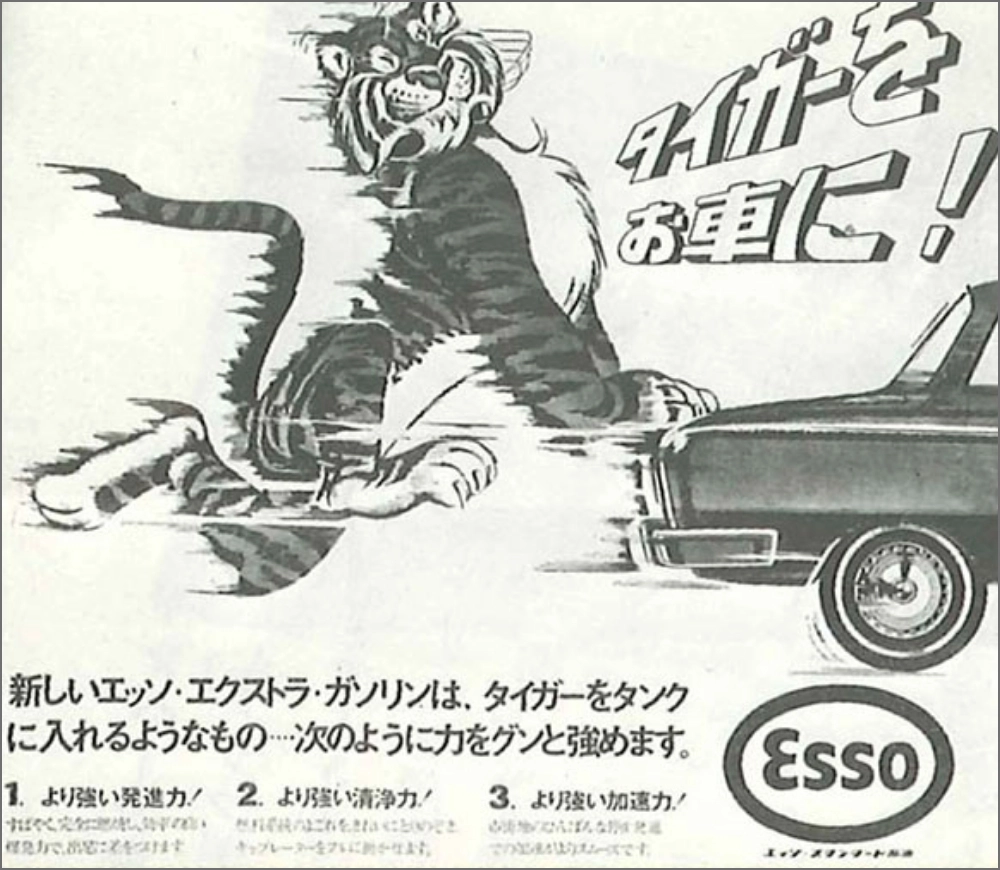 ▲ Advertisement: “Put a Tiger in Your Tank”
▲ Advertisement: “Put a Tiger in Your Tank”
1996
-
1996 Liberalization of oil
Liberalization of oil
The Act on Interim Measures Concerning the Importation of Designated Petroleum Products was repealed, effectively lifting the ban on imports of petroleum products from overseas. The influx of foreign products, which are cheaper than domestic products, has led to intensified sales competition, accelerating the consolidation of petroleum companies to strengthen competitiveness and survive.
1997
-
1997 Kyoto Protocol adopted
Kyoto Protocol
The world's first international treaty mandating greenhouse gas emission reduction targets for developed countries.
1998
-
1998 Lifting of ban and introduction of self-service gas stations
-
1998 Electricity sales business to corporations using in-house power generation began
From the 2000s:
2000
2000
-
2000 Domestic demand for petroleum products began to decline
Petrochemical business was expanded as a high-value-added business for other than petroleum products.
2001
-
2001 The ENEOS brand launched
2002
-
2002 ExxonMobil Yugen Kaisha established
With the merger of Exxon and Mobil in 1999, the Japanese companies they had invested in were also restructured.
2006
-
2006 Vietnam's Associated Gas Recovery and Utilization Project approved as a Clean Development Mechanism (CDM) project
2009
-
2009 Enactment of the Sophisticated Methods Act, which has since sequentially expanded
Sophisticated Methods Act
An act to encourage domestic energy supply businesses to use non-fossil resources and make effective use of fossil sources in order to ensure a stable and adequate supply of energy. It supported the reorganization of petroleum companies and reduction of refining capacity.
From the 2010s:
2010
-
2010 Nippon Oil Corporation and the Nippon Mining Group merged to form the JX Group
2013
-
2013 Mega solar power generation business began
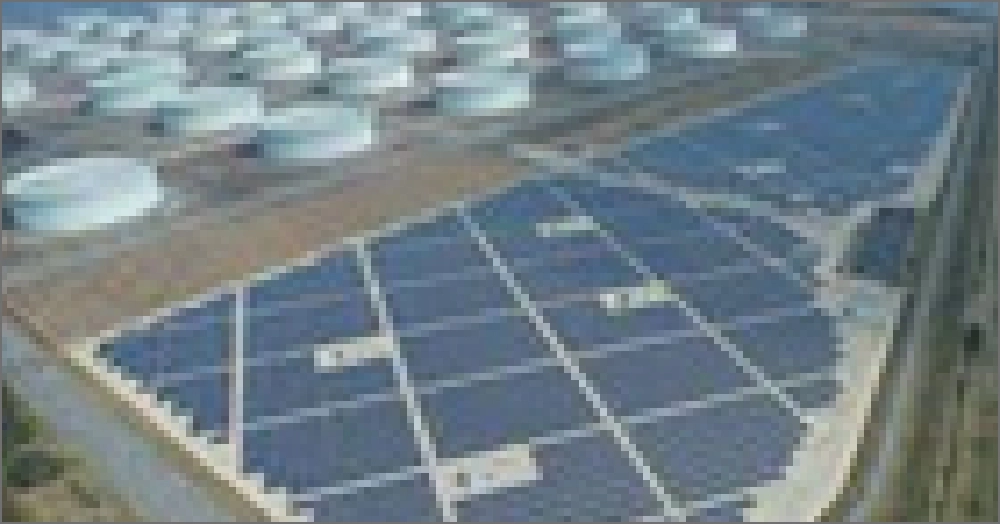 ▲ Los Pelambres Copper Mine
▲ Los Pelambres Copper Mine
2014
-
2014 Japan's first hydrogen station opened
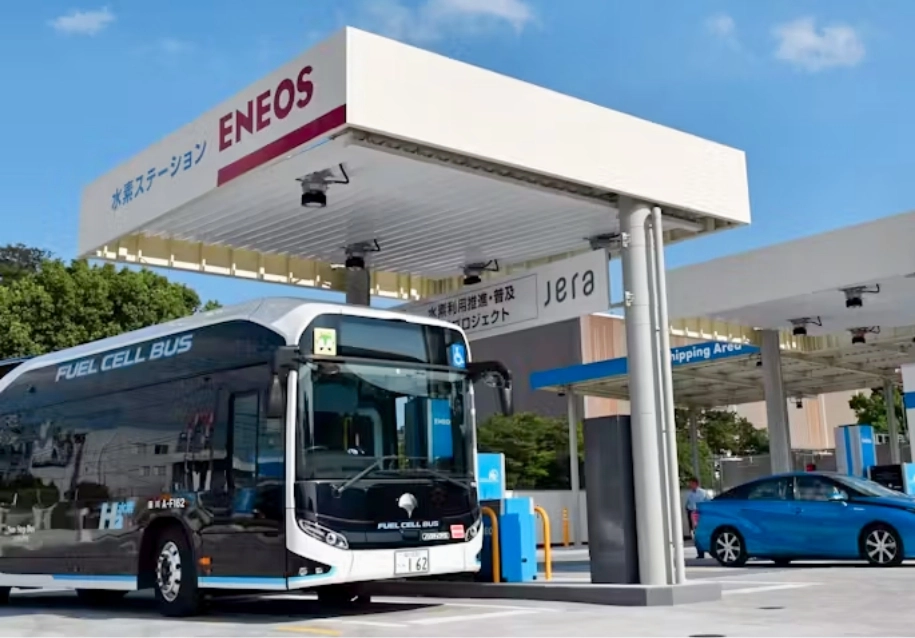 ▲ Hydrogen station
▲ Hydrogen station
2015
-
2015 Paris Agreement
Paris Agreement
A new international framework for reducing greenhouse gas emissions after 2020, succeeding the Kyoto Protocol. All participating countries, including developing countries, are subject to reduction efforts, and the goal is to limit the increase in the global average temperature to well below 2℃ above pre-industrial levels (2℃ target), while continuing efforts to limit the temperature increase to 1.5℃ above pre-industrial levels, accelerating global trend of decarbonization.
2016
-
2016 Full liberalization of electricity
Full liberalization of electricity
Electricity retailing to businesses and households was fully liberalized, enabling companies in various industries to participate in the sale of electricity beyond regional boundaries.
-
2016 Entry into the household electricity retailing business and start of the ENEOS Power supply

2017
-
2017 The JXTG Group formed
Full liberalization of electricity
In August 2016, the JX Group and the TonenGeneral Group concluded a merger agreement. In April 2017, the JXTG Group was formed.
-
2017 CO2-EOR operations began in the U.S.
-
2017 Liberalization of gas
2019
-
2019 Entry into the household gas retailing business and start of the ENEOS Toshi Gas supply

-
2019 Long-Term Vision for 2040 announced
-
2019 Endorsement and signing of TCFD recommendations
2020
-
2020 Declaration of carbon neutrality in 2040
-
2020 The Group name changed to the ENEOS Group
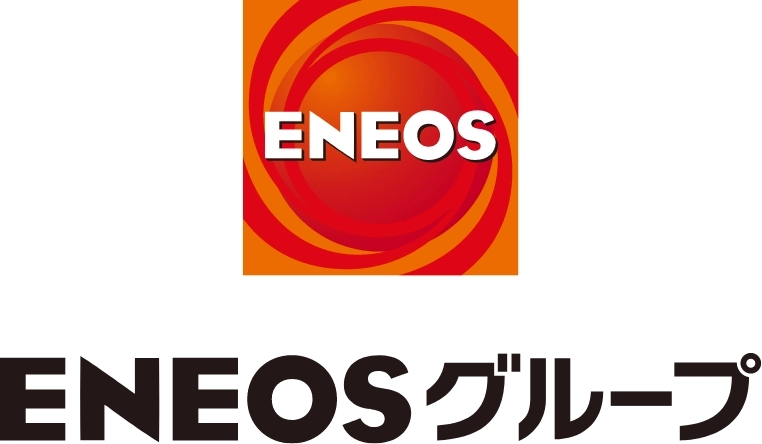
2021
-
2021 Acquisition of all shares of Japan Renewable Energy Corporation (currently “ENEOS Renewable Energy Corporation) decided
2022
-
2022 Acquisition of elastomer business of JSR Corporation completed
ENEOS Materials Corporation, which took over the elastomer business and shares of subsidiaries and affiliates related to the elastomer business, began operations
-
2022 CCS/CCUS business in the U.S. became a wholly owned subsidiary
2023
-
2023 New Long-Term Vision announced
2024
-
2024 Spin-off of high performance materials business, electricity business, and renewable energy business implemented

Envisioned goals for the future
Leading Japan's energy transition and continuing to be a main player in the carbon-neutral society
-
See the history of Nippon Oil Corporation since 1888.
-
See the history of Nippon Mining Holdings, Inc. since 1905.
-
See the history of the TonenGeneral Group since 1893.

